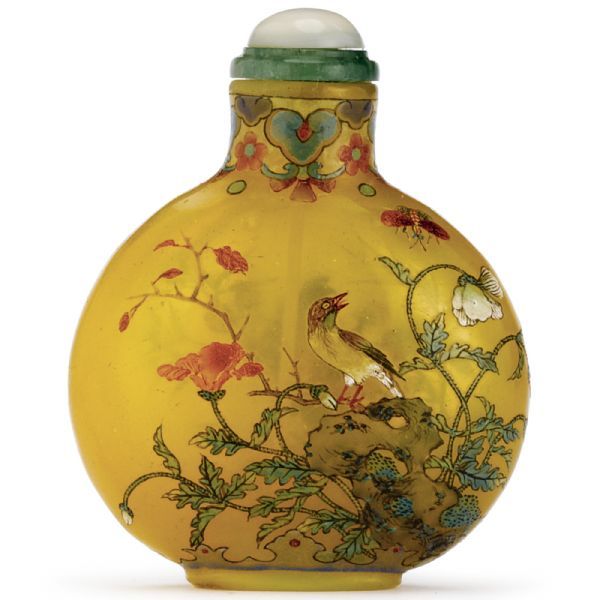

图鉴搜索
IMPERIAL, ATTRIBUTED TO THE PALACE WORKSHOPS, BEIJING
Collection of Russell Mullins.
Collection of Edward Choate O'Dell.
Collection of Janos Szekeres.
Christie's New York, 27th November 1991, lot 106.
The enamel workshop within the Palace was set up, along with other workshops, by the Kangxi emperor. Enamel was known as fa lang and could be decorated on bottles of gold, copper or glass. It was the Hua Fang (the painting workshop) of the Falang zuo (the enamel workshop) which was responsible for decorating the bottles which were then taken to be fired. Peter Lam has suggested that glass objects, including snuff bottles, were produced in the glass workshop of the Yuanming Yuan which was set up in the Yongzheng period, rather than in the original glass factory in the Chanchikou. Given the proximity of the glass and enamel workshops in the Yuanmingyuan, it is likely that all the finer work was done there.
Technically, the decoration of enamel on glass and enamel on metal, is different. The enamels used on glass are similar to famille-rose enamels on porcelain and are decorated by using the "heaping" method, popularly known as dui liaokuan. This method differentiates enamelled glass bottles made by the Court from those later examples made commercially where the enamel is thinner, with little depth and is colored within each area in a single monotone.
Along with the opaque yellow bottle in lot 118, the only other related example, which is both opaque and translucent, is illustrated in Bob C. Stevens, The Collector's Book of Snuff Bottles, New York and Tokyo, 1976, no. 955.